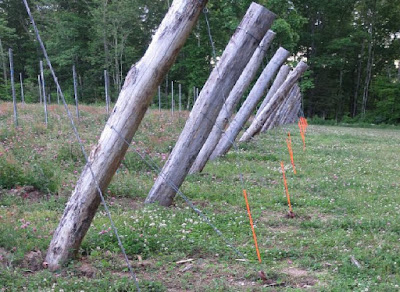A new addition to this blog is the recruitment of
Guest Contributors who have visited wineries in far flung locations. The first guest contributor is
Summer Lane who has had a 35 year career in veterinary medicine and pharmaceuticals and a lifetime of travel. She is a sports, food and wine enthusiast. This is her first guest contribution to this blog.
After hearing of my plans to go sailing along the coast of Dalmatia, my friend and enologist recruited me to be a guest contributor to her wine blog. Though I have been discovering wine for over 20 years, there is so much to know about varietals, regions, vintages, etc that I can only say, I really know nothing about wine. Wine is an extremely personal, highly subjective matter, and any evaluation of a wine is bound to stir discussion and adamant disagreement that cannot be resolved objectively.
My six sailing companions had a range of experience with wine tasting, from none to moderate. The sailing trip was a boating trip, driven by wind and waves—not focused on wine—and we were only going for 10 days specifically to the southern islands near Split. That said, we sampled many wines of the region in a spontaneous, terribly unsystematic way and, most importantly, we had fun. So with those disclaimers, I offer you a very high level review of one wine lover's odyssey of Croatian wines.
Like any wine producing region, particularly those in Europe, in Croatia everyone seems to make wine—from one's grandfather to recognized professionals. The varietals and clones cultivated, the location and management of vineyards, and the processes of harvesting the grapes and making the wine are highly variable, and as a result so is the quality of the wine.
Grapes have been grown in Croatia since introduced by the Greeks in 6th century BC and Athenian writers in 400 BC praised white wine from the Dalmatian island of Vis. Today, some varietals are grown that are known worldwide, some grown are known by different names elsewhere in the world, and some are distinctly local. For instance, Croatian grape varietal Crljenak Kastelanski (or Tribidrag, which is the name dating back to the 14th century) is called Primitivo in Italy and Zinfandel in the US. The most common red grape in Croatia, Plavac Mali, is descended from Crljenak Kastelanski. Pošip is a very common white varietal that from what I can tell is specifically local. Similarly, Bogdanuša, Trnjak, Vugava (Bugava), Trbljan (Kuc), and Kurteloska are local to Croatia and/or that region of the world. The wine drinking experience varies with the type and quality of the wine. Wines have one of three quality classifications: Vrhunsko Vino: Premium Quality Wine, Kvalitetno Vino: Quality Wine, or Stolno Vino: Table Wine. See the Wikipedia link for a concise summary of wine regions, qualities, and varietals:
Croatian Wine.
Unbottled, unlabeled locally produced wine was served in carafes at the informal 'konobas' (literally translated 'tavern'), which were often small family run restaurants with marvelous indigenous cuisine. The menu at these restaurants on the islands was often limited to three local traditional main dishes of fish, squid or octopus, and lamb with one or two house appetizers and aperitifs. We found the food was, more often than not, exceptionally fresh and tasty. Combined with the unusually idyllic and unique hilltop or waterfront setting and some good company, these establishments provided dining satisfaction unrivaled by the finest dining locations. Admittedly, though, the wine was not the highlight.
The local or family produced white wine, often of Pošip or Bogdanuša, was simple and light and usually had grapefruit, other citrus, local herbs, and/or grass overtones. Some whites, often blends, had an unctuous, musty nose of overripe or fermenting fruit and/or sea breeze or low tide. The rosés and reds, almost always of Plavac Mali, were usually light with bright red fruit, such as cherry, raspberry, or strawberry. The established wineries had richer wines of Plavac Mali that yielded dark cherry, plum, pepper, fennel, chocolate, leather and/or raw beef notes.
Stay tuned for the next three installments of Summer Lane's sailing holiday to Croatia and her visit to three well-known and reputed wineries, Tomic, Milos and Grgic.



























